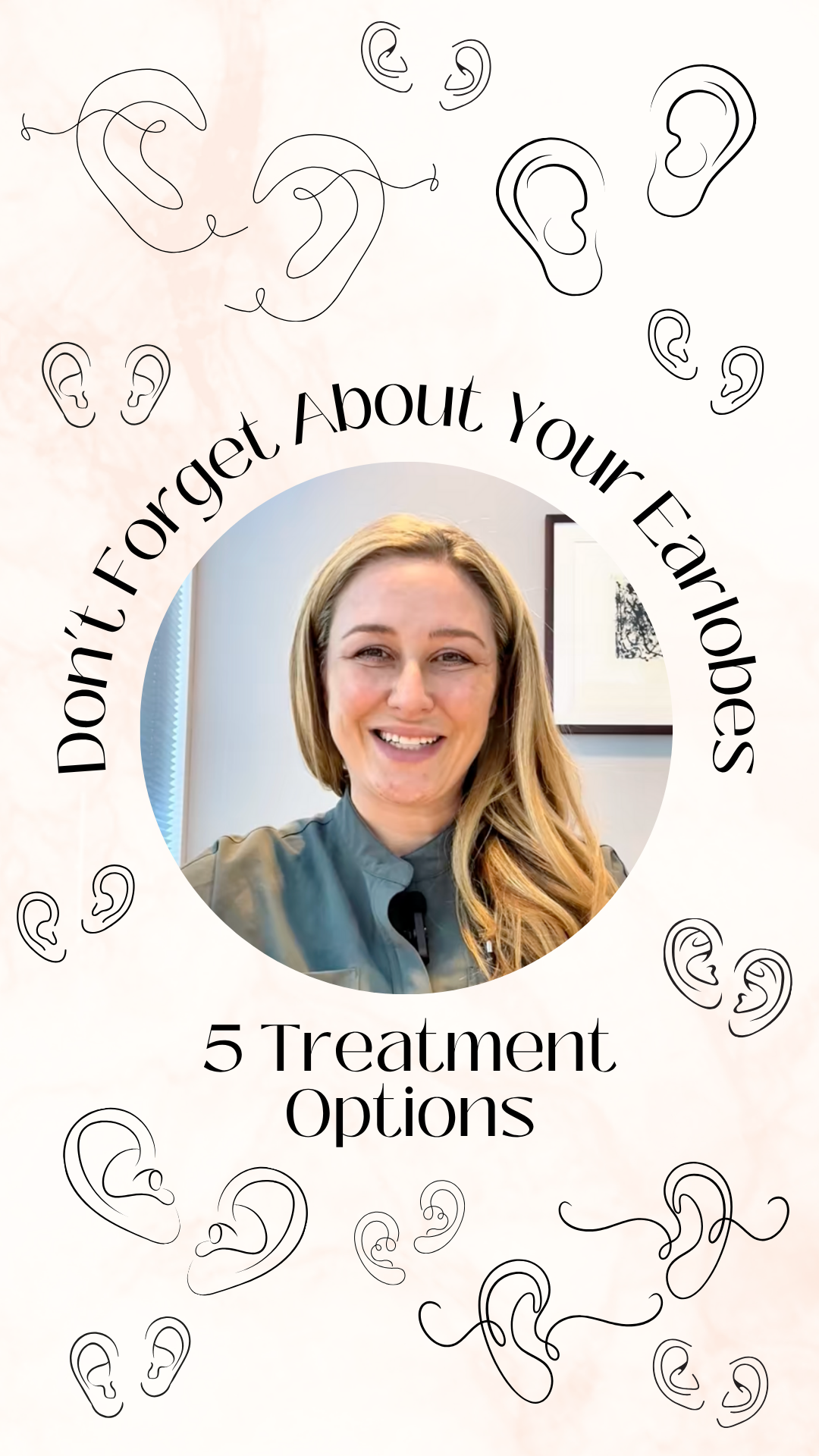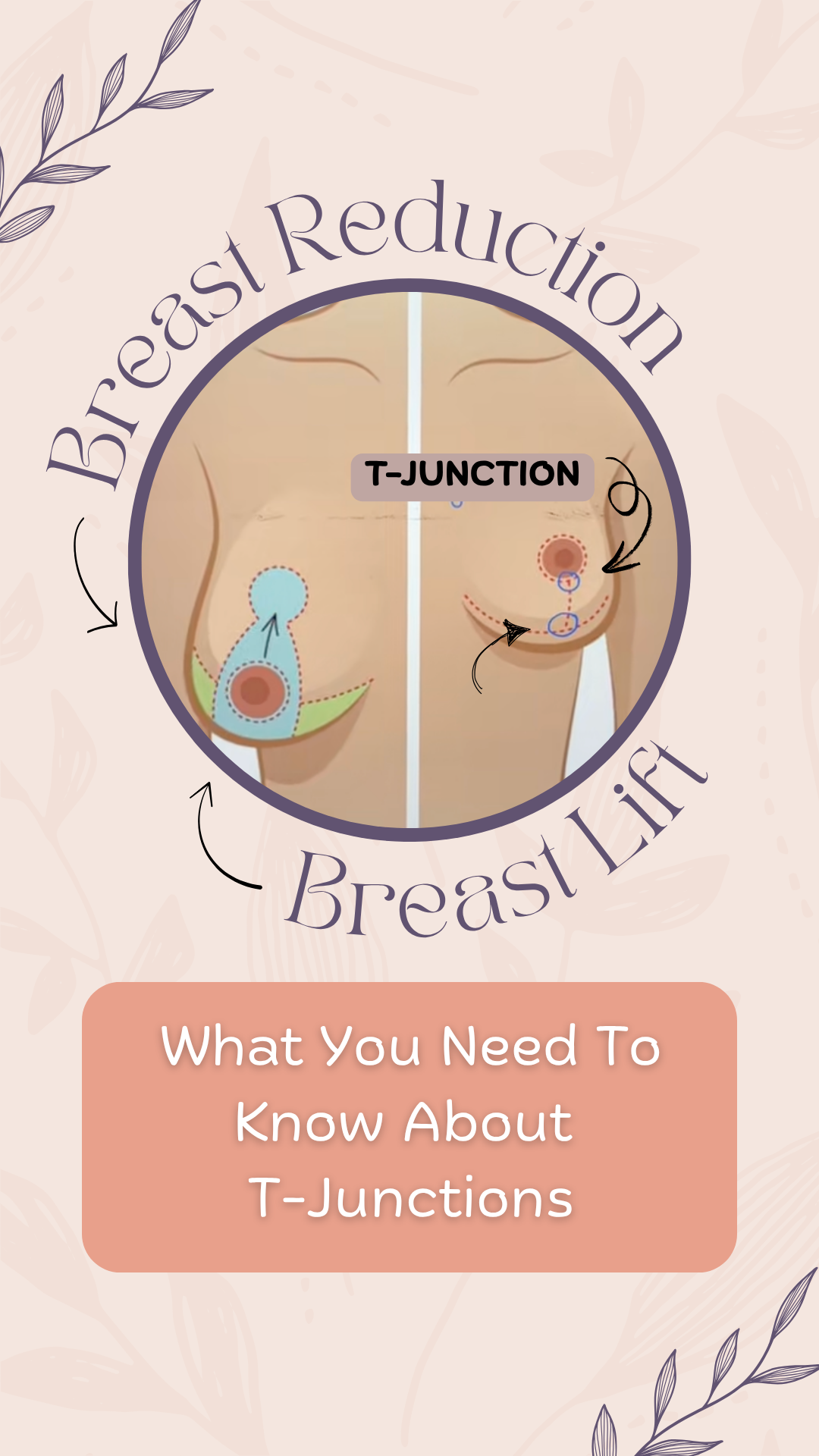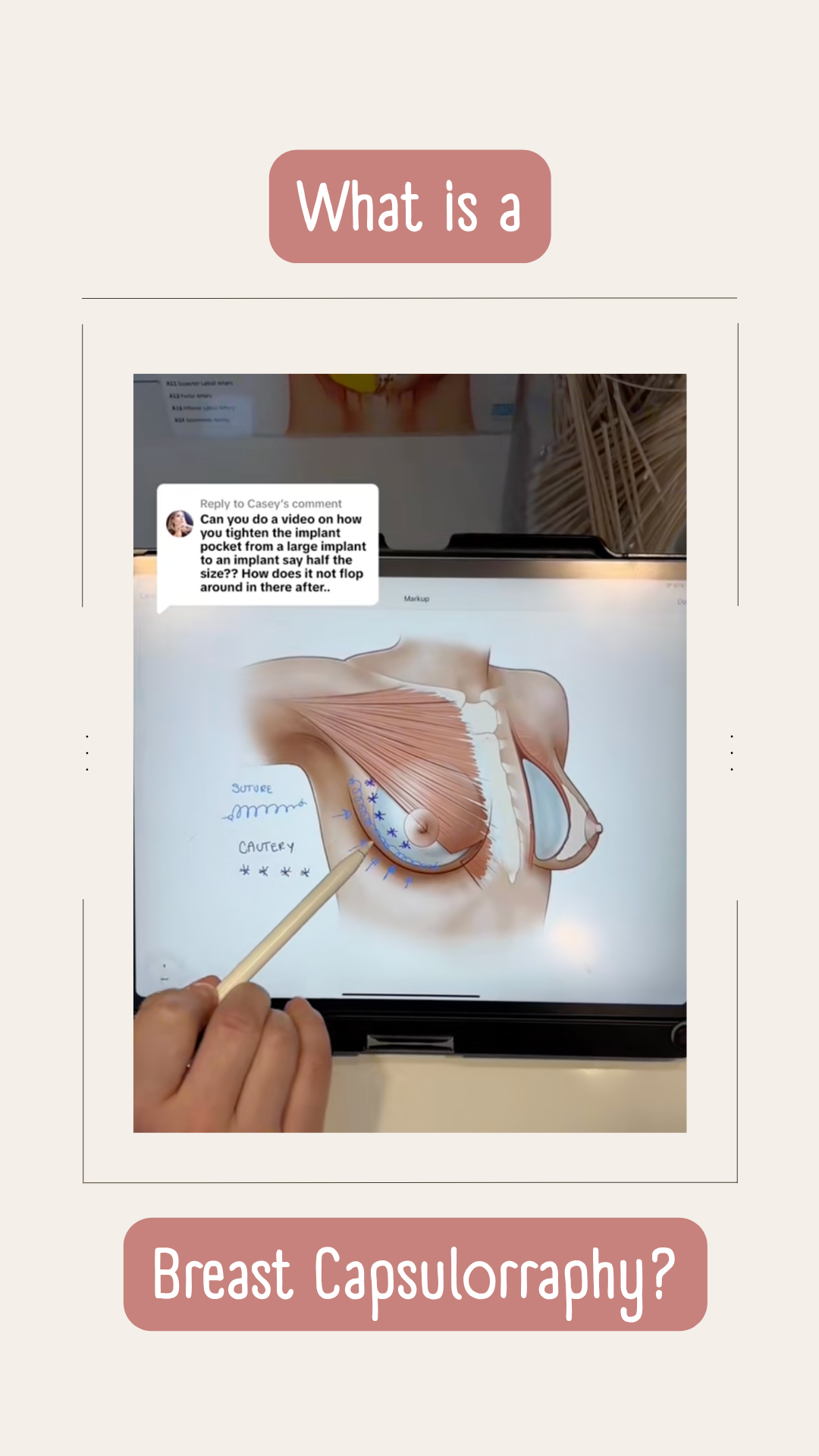Earlobe Rejuvenation
Earlobe surgery can help repair torn, stretched or disfigured earlobes, as well as reduce the size of overly large earlobes.
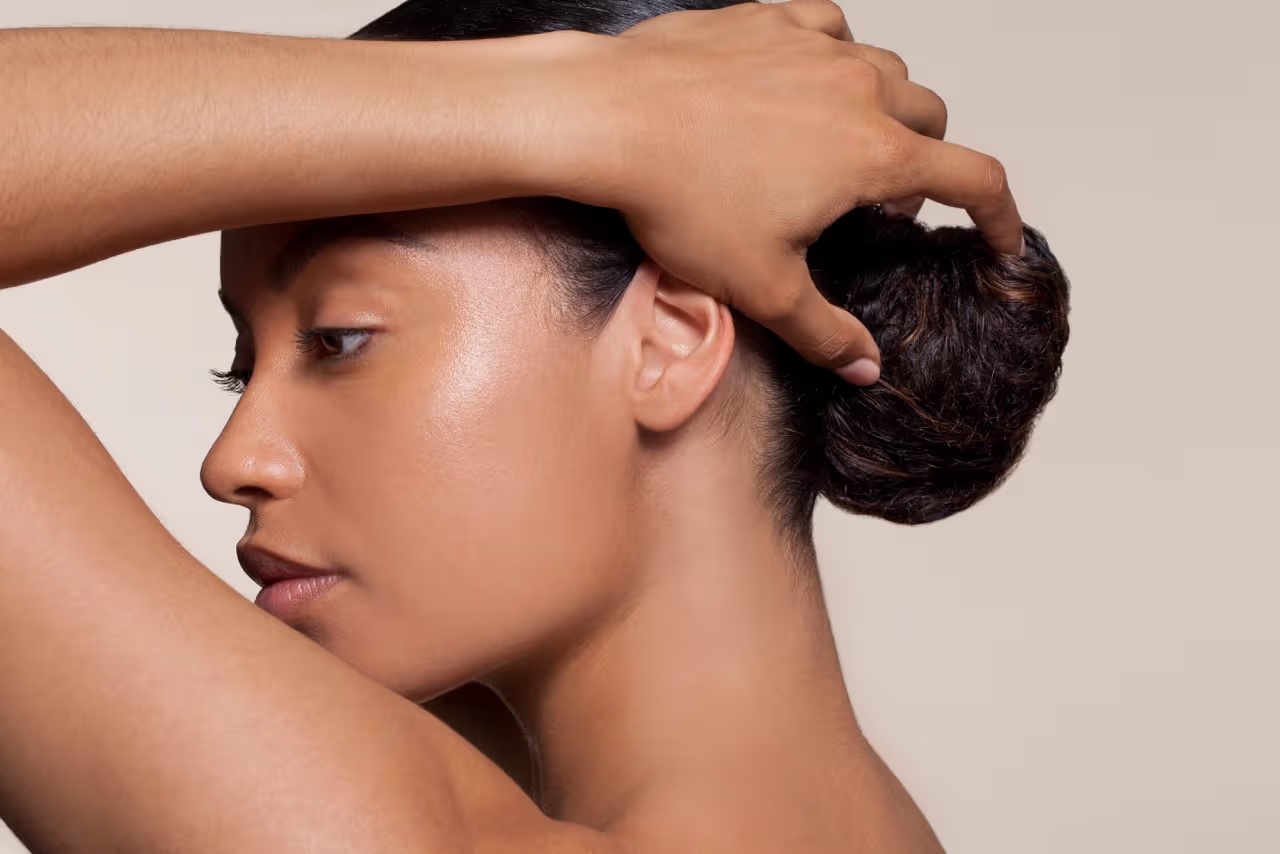
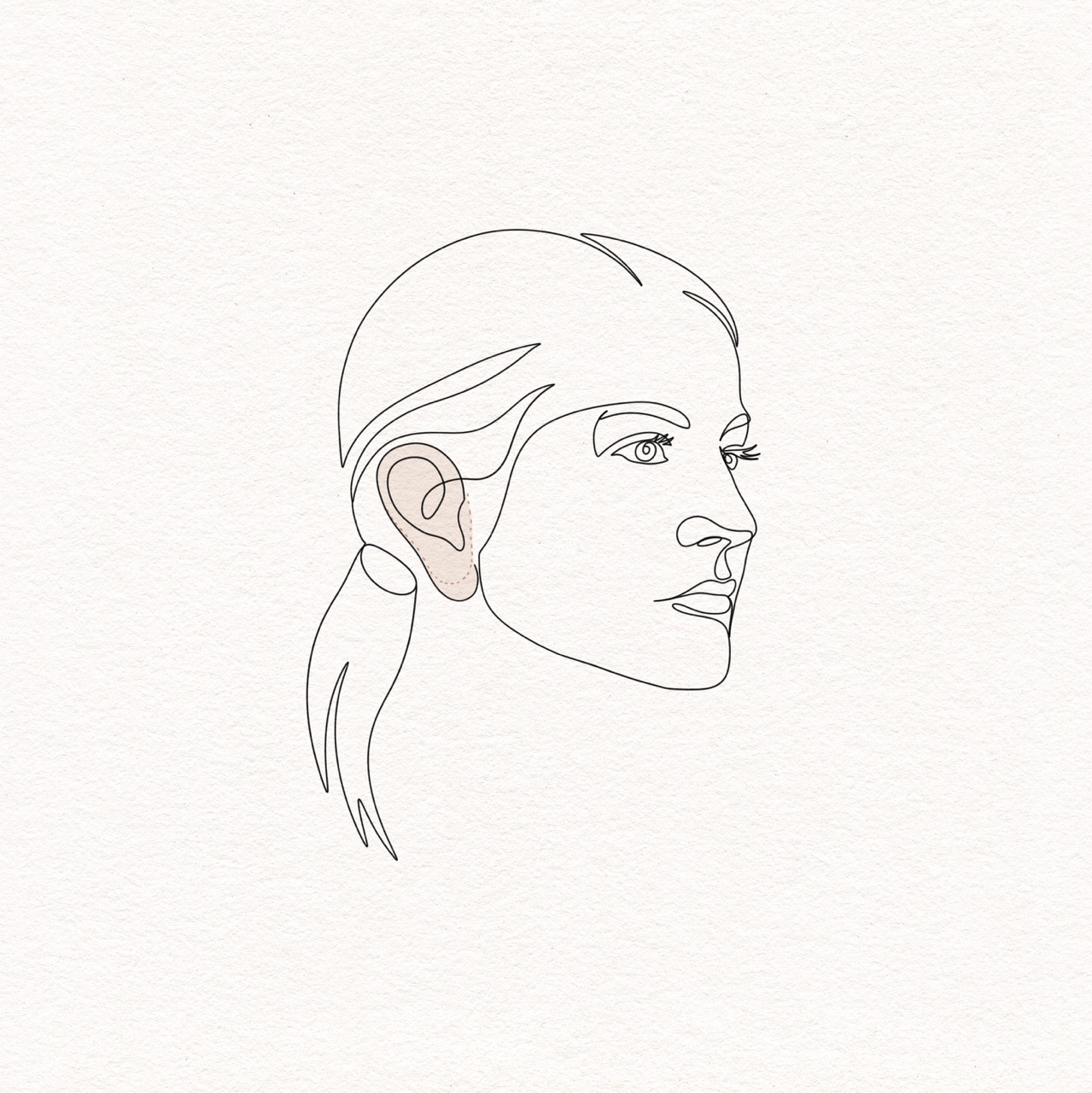
Earlobe repair or reduction surgery is a minimally invasive, in-office procedure designed to enhance the appearance of torn, stretched, elongated, enlarged, or misshapen earlobes. These concerns can arise from earrings, gauges, heavy jewelry, piercings, aging, prior surgery, injury, or genetics. While subtle, the earlobes can draw attention and often reflect signs of wear or aging—making even small imperfections noticeably impactful.
This straightforward procedure involves minimal discomfort and downtime, and aims to restore the natural contour and symmetry of the earlobes. For those who enjoy wearing earrings, it offers the opportunity to rejuvenate and strengthen the earlobes, allowing for re-piercing once fully healed. Many patients find renewed confidence in showcasing their ears, wearing their hair back, and enjoying their favorite earrings after treatment.
In addition to traditional earlobe repair and reduction, Dr. Aimé also treats pixie ear deformity—a condition where the earlobe appears tethered or pulled downward, often following facelift surgery or scar contracture. Pixie ear correction involves releasing the earlobe and restoring a natural, detached contour, bringing balance back to the lower face and ear.
For patients seeking a non-surgical option, deflated, sagging, or wrinkled earlobes can also be volumized using dermal fillers or fat transfer. These treatments help restore lost volume, improve skin texture, and create a smoother, more youthful appearance—ideal for those who want subtle rejuvenation without incisions.
What you need to know
Every procedure and treatment we offer is thoughtfully designed to meet your unique goals, lifestyle, and anatomy. Below, you’ll find key details about what to expect—from how the procedure works to recovery guidance and ideal candidacy—so you can feel informed, confident, and empowered at every step of your journey.
1 to 1.5 hour surgery length
Local anesthesia
In-office procedure or combine with other facial procedures
Scar in center of earlobe
1 -2 day recovery
Restores the natural shape and contour of the earlobe
Allows earlobe piercing to be re-positioned
Allows earrings to be worn again
Prevents having to cover earlobes with hair to hide them
Restores confidence
You'll likely benefit from an earlobe repair surgery if you have:
Stretched out or enlarged earlobe piercings
Torn or split earlobes
Poorly positioned earlobe piercings
Naturally elongated or large earlobes
Mismatched or asymmetric earlobes
Abnormal attachment of earlobes to neck (pixie ear deformity)

An overview of the procedure

"What feels like a concierge doctor experience, at its finest! I cannot be more thankful and highly recommend Dr. Aime!"
“I recently underwent a submentoplasty procedure performed by the incredibly talented plastic surgeon, Dr Aimé. My decision to have submentoplasty was not taken lightly and Dr Aimé made sure to thoroughly explain the entire procedure to me during our consultation.”
Frequently Asked Questions
We’ve gathered answers to some of the most common questions our patients ask about this procedure. Whether you’re just starting your research or preparing for surgery, this section is here to help you feel informed and confident every step of the way.
Earlobe repair involves surgically correcting torn, stretched, or elongated lobes—often due to trauma, gauges, or heavy earrings. Earlobe rejuvenation, on the other hand, is a non-surgical treatment (typically with dermal fillers or fat transfer) to restore volume and improve contour in aging or deflated lobes.
Unfortunately, if your earlobe is torn or the piercing hole is large, your options are limited to either leaving it untreated or opting for surgical repair. Non-surgical alternatives are not applicable in these situations.
Yes, torn earlobe repair can be performed on both ears simultaneously. Having both ears repaired during the same procedure is a common and feasible option. This approach can be convenient for patients, as it often requires only one session, minimizing the overall recovery time and allowing for symmetrical healing. However, the suitability of simultaneous repair will be assessed during the preoperative consultation, taking into consideration the your specific situation and the extent of the damage to each earlobe.
The scar following earlobe repair surgery typically appears as a small, vertical, or slightly curved line at the center of the lobe. Initially, the scar may be firm and pink, but it gradually softens and fades in color over time. Once well-healed, the scar is generally barely perceptible, especially when earrings are worn again.
Yes, you can absolutely re-pierce your repaired earlobe! Dr. Aimé advises waiting a minimum of 6 weeks after your earlobe repair before considering re-piercing. If you choose to proceed, Dr. Aimé is more than happy to perform the re-piercing for you. To ensure a comfortable experience, she typically administers numbing to the ear prior to the piercing.
Earlobe repair is generally considered a safe and straightforward procedure; however, like any surgical intervention, it carries some inherent risks. Potential risks associated with earlobe repair may include:
Infection: Although rare, there is a risk of infection at the surgical site. Proper post-operative care and adherence to hygiene guidelines can significantly mitigate this risk. Typically, antibiotics are not routinely prescribed or administered due to the low risk of infection associated with this procedure. Nevertheless, if any signs of infection manifest post-operatively, the use of antibiotics may become necessary.
Bleeding: Some bleeding may occur during or after the procedure. However, this is usually minimal and can be controlled with proper surgical techniques and post-operative care.
Scarring: While efforts are made to minimize scarring, the formation of visible scars is a possibility. Factors such as individual healing patterns, skin type, genetics, sun exposure, and adherence to aftercare instructions can influence the extent of scarring
Pain and Discomfort: Mild to moderate pain and discomfort may be experienced during the recovery period. However, this is typically manageable with over-the-counter pain medications such as Tylenol and ibuprofen.
Allergic Reaction: In rare cases, individuals may experience an allergic reaction to local medications, skin antiseptics or materials used during the procedure. Thorough pre-operative assessments help identify and minimize such risks.
Asymmetry or Irregularities: Achieving perfect symmetry may be challenging, and there is a slight risk of asymmetry or irregularities in the repaired earlobes.
Skillful surgical techniques and precise attention to detail aim to minimize these risks.It's important to note that the likelihood of complications is generally low, and many patients undergo earlobe repair with successful outcomes. Dr. Aime will discuss these potential risks and address any concerns you may have during your pre-operative consultation, ensuring you are well-informed and confident about the procedure. As with any medical intervention, individual outcomes may vary, and strict adherence to post-operative care instructions is crucial for optimal results.
Although infection is very uncommon, recognizing signs of infection after torn earlobe repair is very important. Watch for any of the following signs:
Increased Redness: A significant increase in redness around the surgical site may suggest infection.
Swelling: Excessive swelling that persists or worsens over time could be a sign of infection.
Pain or Discomfort: Intensified or prolonged pain that goes beyond the usual healing process may be indicative of an infection.
Pus or Discharge: The presence of pus, unusual discharge, or a foul odor at the incision site may signal infection.
Fever: A fever or an elevated body temperature could be a systemic response to an infection.
Worsening Symptoms: If symptoms such as pain, redness, or swelling worsen rather than improve, it may be a cause for concern.
Should you notice any of these signs, it is crucial to contact your surgeon promptly for evaluation and appropriate management. Early detection and treatment of infections contribute to optimal healing outcomes after torn earlobe repair.
Generally, the cost of earlobe repair for one ear is approximately $1300 or $2000 for repair of both earlobes. Complimentary re-piercing is included.
Insurance coverage for torn earlobe repair is typically applicable only in cases of traumatic tears, where two actively bleeding surfaces are present. In such situations, immediate emergency care involves suturing the surfaces together. However, if the tear edges have healed over, the repair procedure is not covered by medical insurance, and the patient is responsible for the associated costs. Additionally, it's important to be aware that the expense of earlobe re-piercing is not covered by medical insurance.
The earlobe, a delicate structure composed of skin, fat, and fibrous tissue, undergoes natural changes over time, including thinning, weakening, and potential stretching. Common contributors to these changes are the regular use of heavy earrings or gauges. Long, dangly, or hoop earrings pose a higher risk of snagging, pulling, or causing tears. Opting for small, lightweight earrings minimizes such risks, and removing earrings at bedtime can further reduce the likelihood of earlobe stretching or tearing. While enjoying your favorite larger earrings is still possible, moderation is key to preserving the health and integrity of your earlobes.
As we age, the ears undergo natural changes, including increased size and a reduction in volume and firmness of the earlobes. This often results in the development of a central crease and potential inward folding. To rejuvenate and restore a more youthful contour and volume, Dr. Aime commonly suggests procedures such as dermal filler injections or fat grafting.
Earlobe reduction is a simple in-office surgical procedure designed to shorten or reshape elongated, stretched, or drooping earlobes. Over time, earlobes may become larger or sag due to genetics, aging, heavy earrings, or prior gauges. A good candidate is someone who feels their earlobes are disproportionately long or want a more youthful, balanced appearance. The procedure is quick, performed under local anesthesia, and leaves a minimal scar.
A pixie ear deformity refers to a tethered or overly attached earlobe that pulls downward and blends into the face without a distinct separation—often seen after facelift surgery or due to scarring. It gives the earlobe a “stuck-on” or stretched look. Correction involves a minor surgical procedure to release and reposition the lobe, restoring a natural contour and freeing the lobe from the skin of the cheek. This can often be done under local anesthesia with minimal downtime.
Ready to start your transformation?
Whether you’re just beginning to explore your options or have specific goals in mind, we’re here to guide you with expertise and compassion.

Read more articles

Rhinoplasty (Nose)
Rhinoplasty, often referred to as a “nose job,” is a surgical procedure that reshapes or refines the nose to improve its appearance, enhance facial harmony, or correct breathing issues. Whether addressing cosmetic concerns, injury-related deformities, or functional obstructions, rhinoplasty is a highly individualized surgery tailored to your goals and anatomy.

Face Lift & Neck Lift
A facelift and neck lift are powerful cosmetic procedures designed to restore a more youthful, refreshed appearance by tightening sagging skin, redefining the jawline, and smoothing the neck. These procedures target visible signs of aging in the lower face and neck, offering long-lasting, natural-looking results.

Otoplasty (Ear Pinning)
Otoplasty, also known as ear pinning or ear reshaping surgery, is a cosmetic procedure that adjusts the position, shape, or proportion of the ears to create a more natural and balanced appearance.

Neck Liposuction
Neck liposuction removes excess fat beneath the chin and along the lower face to enhance jawline definition and improve the overall contour of the neck.










